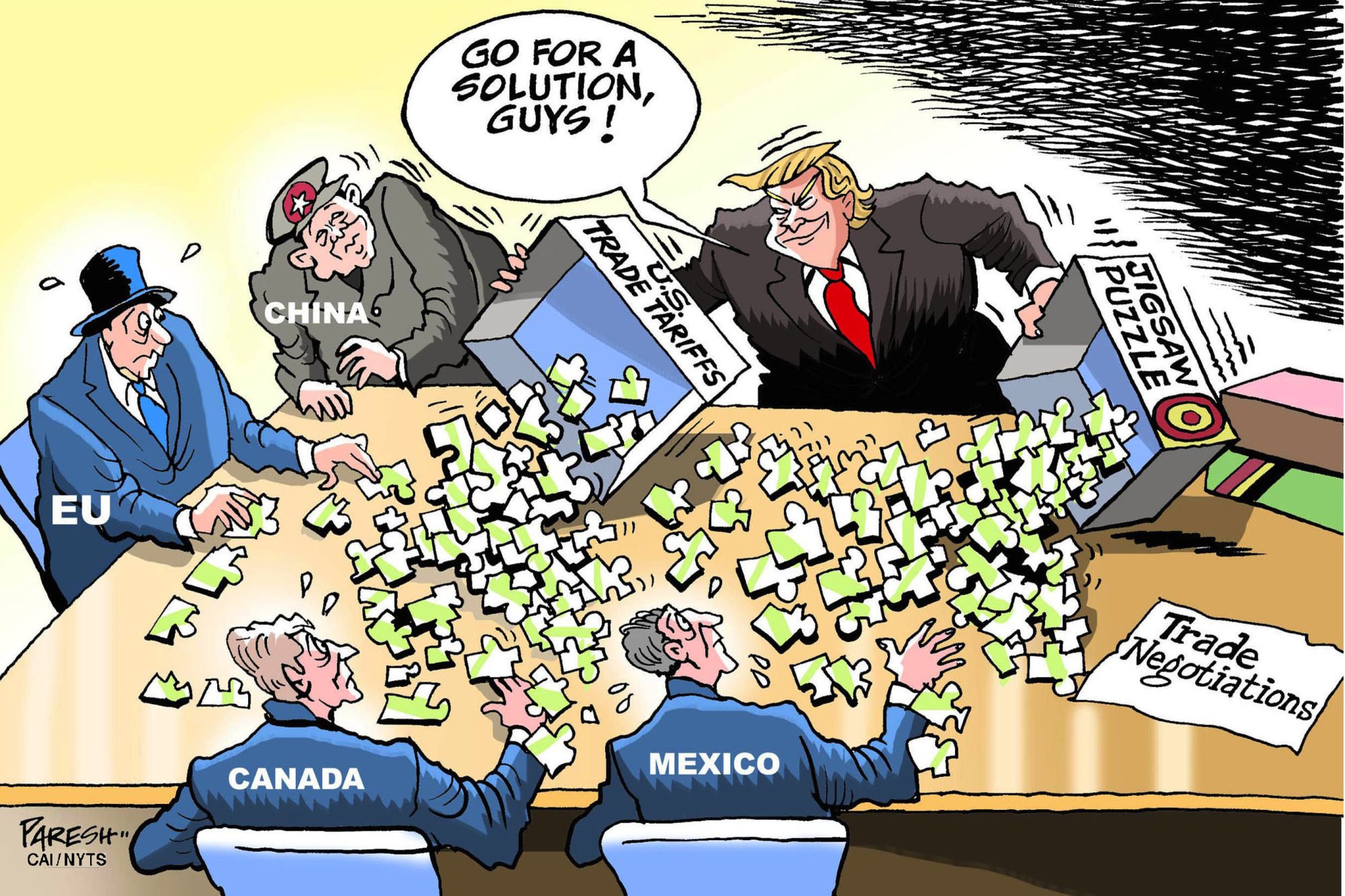U.S. President Donald Trump continues to insist that a trade deficit is a loss — and that while exports are good, imports are bad and trade deficits are bad.
Many well-informed people and the markets have blamed such an argument on Trump's lack of understanding about economics and trade, and have doubted his administration's policy-implementation capabilities. Thus they believed that the chances of the administration actually implementing a protectionist trade policy would be low. But now the trade friction between the United States and its trading partners such as China, the European Union, Canada and Mexico is intensifying. The Trump administration is steadily moving its protectionist agenda forward.
Trump probably regards trade deficits as losses because he views exports as sales, imports as costs and trade balances as either a loss or a profit and thinks that trade deficits derive from costs being greater than sales. This kind of misunderstanding is often seen among executives not familiar with macroeconomics and trade. But the Trump administration has no aides or Cabinet members who can correct the president's misunderstanding. His advisers and Cabinet members in charge of trade issues, such as Peter Navarro, head of the National Trade Council, Secretary of Commerce Wilbur Ross and U.S. Trade Representative Robert Lighthizer, share the president's views. The administration's obsession with reducing trade deficits is not likely to change.

















With your current subscription plan you can comment on stories. However, before writing your first comment, please create a display name in the Profile section of your subscriber account page.